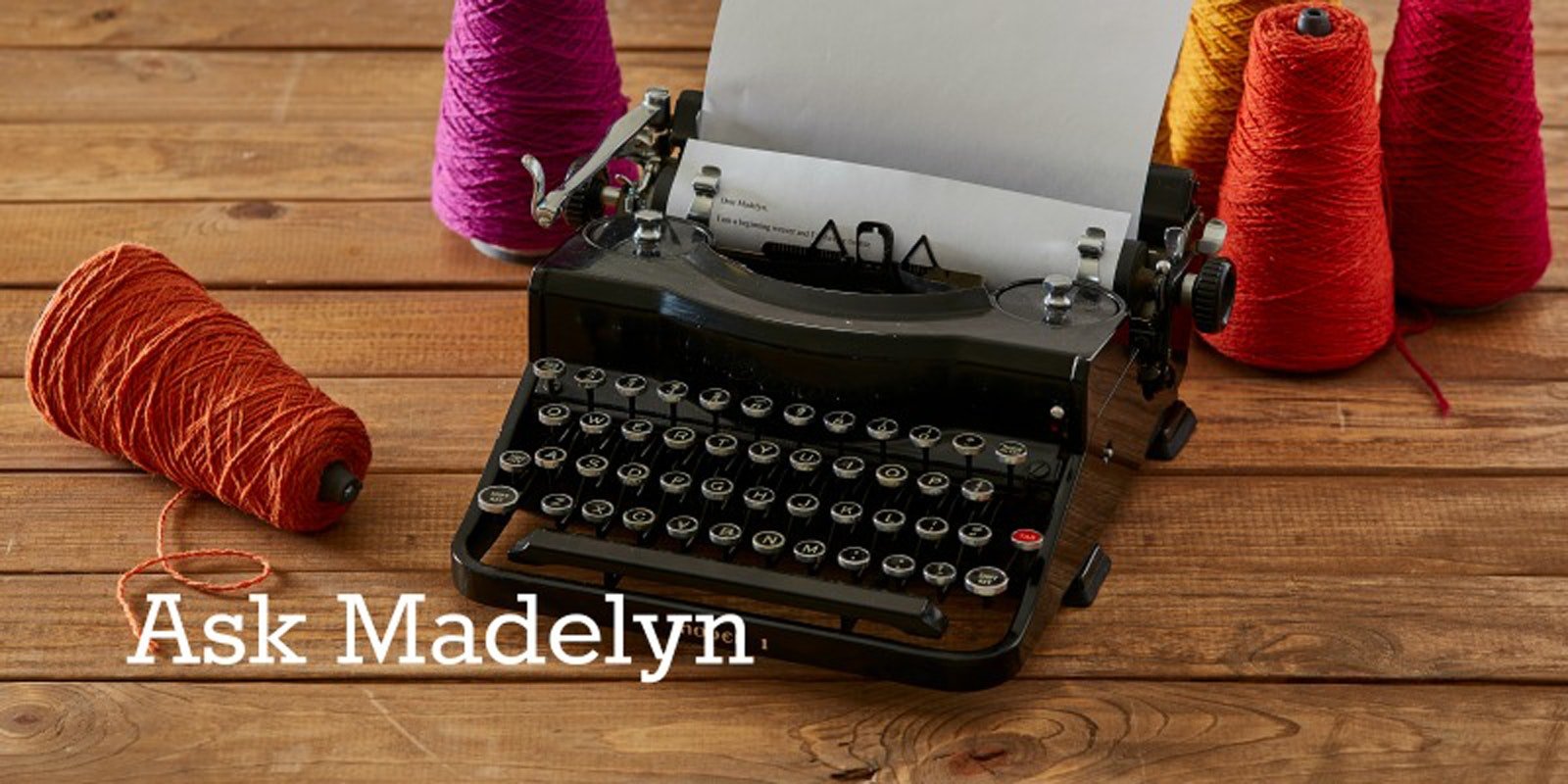| |
Hi Madelyn,
I was wondering if you have ever published anything on how to determine what kind of “hand” the material will have if you use a certain type of yarn? When you are weaving and don’t have much of the yarn, sampling seems like it would use up too much of a precious commodity.
I have a stash of various yarns I have picked up over the years. Some of it is unidentified, some came in small amounts, some are gorgeous, and some are interesting colors/textures/brands. I’d hate to waste any of it.
– Nancy
Hi Nancy!
First just one thought. It would be a much more tragic waste of yarn to weave a project carefully designed to use it all up and then find out that the project is not a success. Many would argue that even it the final project has to be smaller, it’s worth sampling first to ensure its success.
At the very least, you can allow enough warp length to cut off even a couple of inches of the fabric to wash before you start weaving the project. If you need to make any changes, you can make them then (usually this would be in the warp and/or weft setts).
However, there are some general principles that can help you guess closely enough to risk skipping sampling. The hand of a fabric is a combination of the fiber, the weave structure, the warp and weft sett, and the final finishing method.
For plied cottons, you can first reference the plain-weave sett given in the Master Yarn Chart. This warp (and weft) sett will produce a firm plain weave and a hand appropriate for fabrics such as placemats and table runners. If you want a looser hand for other fabric uses, you’ll need to open the sett; for a firmer hand, you’ll need to tighten it. Twills will produce a placemat weight if the sett is closer than the plain-weave sett, how much closer depends on the length of the twill floats (more open setts for shorter floats, closer setts for longer floats). Most weave structures have a plain-weave or twill base.
Plied silks can be treated much the same way as cotton except that the plain-weave sett for a given silk (in the Master Yarn Chart) can’t completely be relied upon. The same silk weight (30/2 or 20/2 yd/lb, for example) can have different actual thicknesses. For silks, it is a good idea to wrap a ruler and consider that the sett for a firm plain weave would be equivalent to the number of closely wrapped threads in a half inch. Usually, you want a silk cloth that is soft and drapable, so I’d start with a slightly more open sett than your wrap (and wash the first first inches to check). You can always change the sett after you wash that first small amount.
Wool is probably the trickiest fiber for determining sett/hand since a specific yarn’s reaction to wet finishing almost can’t be predicted if you haven’t used it before. My usual experience is that the setts for wool should be much more open than one’s first guess. The more open, the softer the fabric. In the case of wool, I would absolutely not proceed without wet-finishing a small amount of weaving at least.
Another very valuable aide to planning a project with a new yarn is to go through your collection of Handwovens. Find a project using the same or similar yarn and study the photo and the fabric’s intended use. You can actually see fabric drape and hand in most photos and adapt the setts and other design decisions made in those projects to your own.
Hope this helps!
--Madelyn


